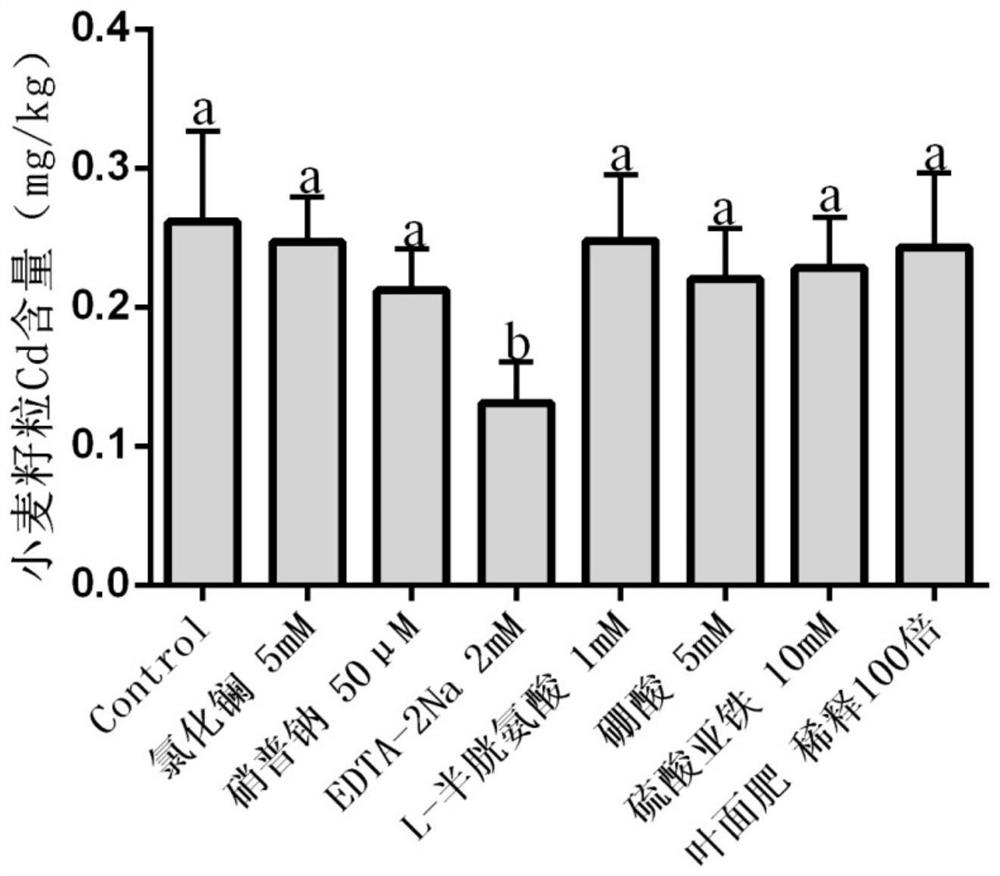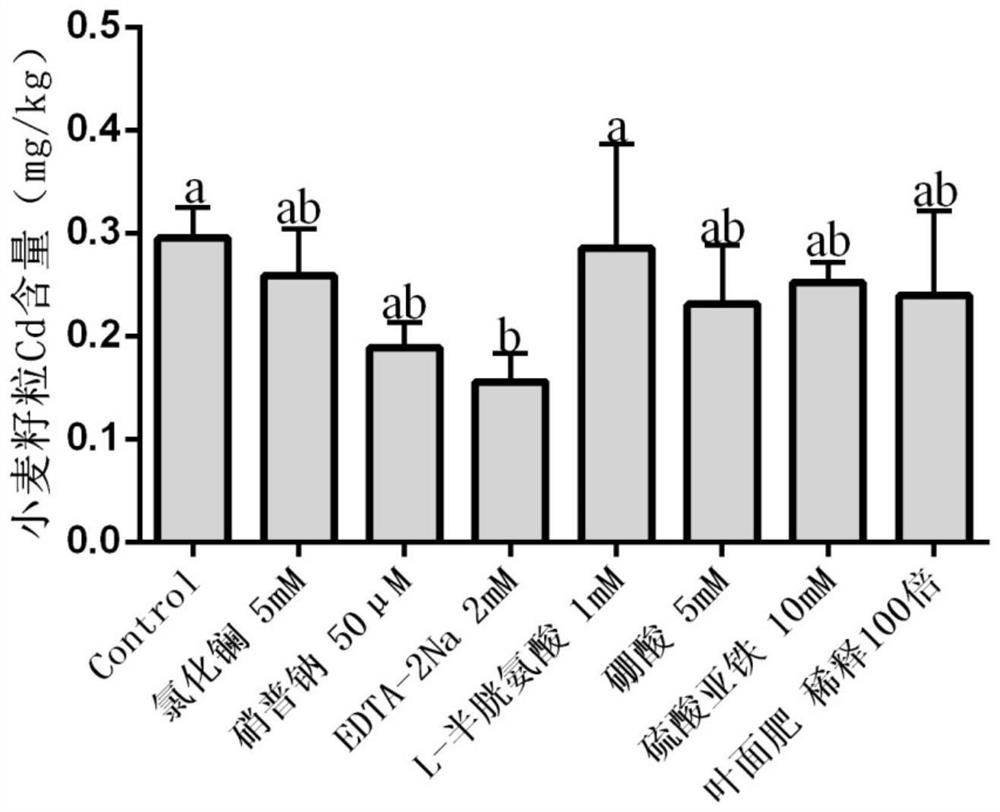A foliar barrier agent for inhibiting the absorption and transport of heavy metal cadmium by wheat grains and its use, research methods and applications
A technology of wheat grains and barrier agents, which is applied in the field of environmental pollution control, can solve problems such as reduction, and achieve the effects of convenient use, mitigation of toxic effects, and wide sources
- Summary
- Abstract
- Description
- Claims
- Application Information
AI Technical Summary
Problems solved by technology
Method used
Image
Examples
Embodiment 1
[0039] Embodiment 1: field experiment
[0040] Experimental material: Aikang 58 (Henan local variety)
[0041] Experimental design: The experimental field is a heavy metal-contaminated farmland located in Xinxiang City, Henan Province, with an area of 5m*60m, which is divided into 5 plots of 5m*11m, and the area of each plot is 55m 2 , the interval between each cell is 1m. The basic physical and chemical properties of the experimental field are shown in Table 2. Eight treatments were set in the experiment, namely: control group (deionized water), lanthanum chloride 5mmol / L, sodium nitroprusside 5umol / L, EDTA-2Na 2mmol / L, L-cysteine 1mmol / L, boric acid 5mmol / L, ferrous sulfate 10mmol / L, foliar fertilizer diluted 100 times, the experimental field was divided into 5 plots, the interval between each plot was 1m, and each treatment was 5 repetitions. According to the random block design, each treatment point was marked with a label, and the spraying treatment was carried o...
Embodiment 2
[0047] Embodiment 2: pot experiment
[0048] Experimental material: low resistance 58
[0049] experimental design:
[0050] 1. Soil treatment: The experiment of wheat soil cultivation potted planting selected heavy metal-polluted soil in Qixia Mountain, Nanjing. After the soil was naturally dried, impurities such as straw and stones were picked out. The naturally air-dried soil was fully ground and mixed evenly, and potted for sowing. The basic physical and chemical properties of Qixia Mountain polluted farmland soil are shown in Table 3.
[0051] 2. Soil column preparation: The soil column has a diameter of 10cm and a height of 30cm, and is placed in a pot with a diameter of 12cm. The bottom of the soil column is wrapped with 3 layers of 60-mesh gauze, and two layers of filter paper are placed on it. There are 54 pots in total.
[0052] 3. Wheat sowing: Sow 30 complete and uniform wheat grains in each pot to ensure sufficient soil moisture.
[0053] 4. Thinning and finali...
Embodiment 3
[0061] Example 3: Wheat Pot Experiment Digestion by Part and Sample Heavy Metal Cd Content Analysis
[0062] Experimental design: In order to further explore the transshipment relationship between various parts of wheat plants, mature wheat plants were divided into grains, wheat husks, flag leaves, middle leaves, lower leaves, the first internode (near the root system), the second section 8 parts between the internode and the third internode, and HNO was applied to different parts of the wheat plant 3 : HClO 4 =87:13 (v; v) is completely digested, and the sample after digestion is analyzed and detected by ICP-OES sample, and the digestion process adopts national standard substance GBW (E) 100348 to carry out quality control, and its recovery rate is above 90%; SPSS and GraphPad software were used to analyze the effect of blockers on the transport of heavy metal Cd in different parts of wheat plants.
[0063] Discussion and analysis:
[0064] (1) As shown in the figure above...
PUM
 Login to View More
Login to View More Abstract
Description
Claims
Application Information
 Login to View More
Login to View More - R&D
- Intellectual Property
- Life Sciences
- Materials
- Tech Scout
- Unparalleled Data Quality
- Higher Quality Content
- 60% Fewer Hallucinations
Browse by: Latest US Patents, China's latest patents, Technical Efficacy Thesaurus, Application Domain, Technology Topic, Popular Technical Reports.
© 2025 PatSnap. All rights reserved.Legal|Privacy policy|Modern Slavery Act Transparency Statement|Sitemap|About US| Contact US: help@patsnap.com



